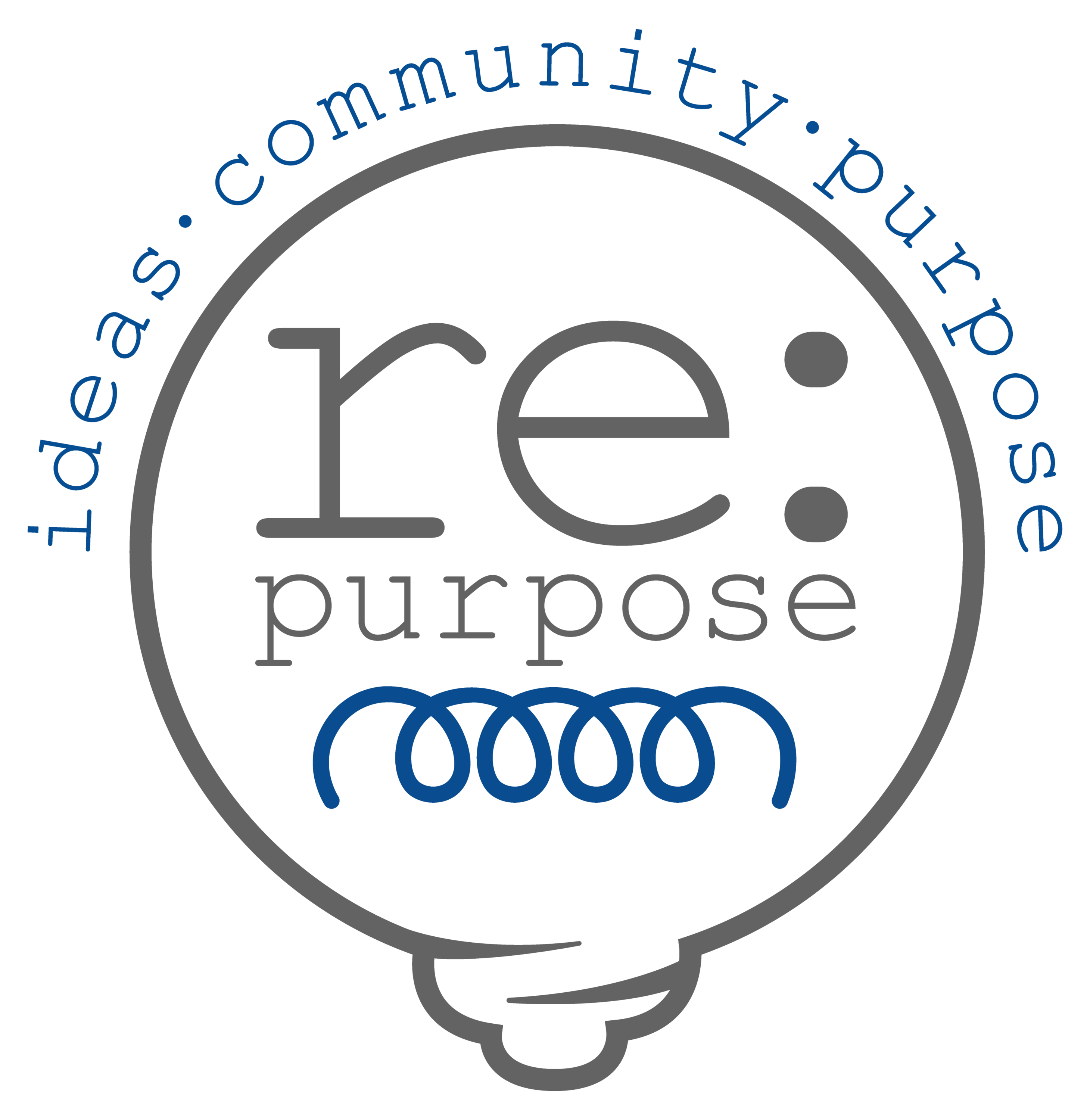Tobe Brockner is a long-time entrepreneur with a fascinating and practical business model. Tobe is the creator of Repurpose Initiative, a virtual knowledge-share community for entrepreneurs and business owners.  The virtual community is filled with seasoned individuals who provide training and support for one another in their individual areas of expertise.
The virtual community is filled with seasoned individuals who provide training and support for one another in their individual areas of expertise.
Tobe runs the community with help from a designer based in the Philippines. He’s worked with multiple Filipino VAs in the past and offers great advice to share on how to hire, train and manage virtual workers.
Where did the idea for Repurpose Initiative come from?
- The idea for Repurpose Initiative was planted back when Tobe was 13 growing up in rural Louisiana (“where the duck dynasty guys are”).
- Years before, Tobe’s Grandfather started a small finance company and grew it to millions of dollars in revenue over many years. His business savvy and experience were invaluable. But when Tobe was 13, his grandfather passed away. He was a very quiet and introverted man and all of the business knowledge he had accumulated over his years of experience disappeared with him. Tobe’s grandfather never talked about or shared any of what he did. It was a major personal as well as professional loss.
- Several years later, when Tobe was in his twenties and had graduated from college, he began his own marketing agency. He remembers sitting in a room with about 300 other entrepreneurs and thinking about all of the collective knowledge in the room.
 Then he thought if he could extract all of the knowledge from all of the people in the room and bundle it together and put a price on it, it would be incredibly valuable.
Then he thought if he could extract all of the knowledge from all of the people in the room and bundle it together and put a price on it, it would be incredibly valuable.
- So he began to ask himself — is it possible? Could there be a way to extract that information and package it in a way to share knowledge with other entrepreneurs who were on the same journey?
- And that’s exactly why Tobe created Repurpose Initiative—an online entrepreneurial knowledge-share community..
Repurpose Initiative is framed by three pillars:
- Peer to peer training – participating business owners create trainings to share with the other members. The trainings are customized to teach their particular area of expertise. They create these trainings in video, pdf or worksheet format to make them accessible to the other members. The trainings are then published in a library that’s accessible to all of the participating members at any given time.
For example, Tobe has created a training on how to find, vet and train Filipino VAs to make online business more expandable and affordable. It’s something he’s figured out over the years and he feels like he has a system down, so he created the training to share with  other members.
other members.
- Peer to peer coaching – every member who has contributed a training module to the library makes themselves available for 4-5 coaching calls per month to help if other members require help in their field of expertise. Tobe explains that a call is much easier and faster than watching “one hundred Youtube videos” when trying to figure something out.
- Accountability groups – “being an entrepreneur is the loneliest job on the planet.” The Repurpose Initiative support groups provide community and accountability for every kind of entrepreneur out there.
Repurpose Initiative is a way to try to extract all of the unique experiences and knowledge from each person in the group. The more diverse the group, the better the resource. Even the brand new entrepreneurs have something to share.
Where did the name come from?
The name comes from the idea of extricating all of the knowledge from multiple entrepreneurs then repackaging and repurposing it to make it accessible to any entrepreneur in need.
What kind of experts participate in Repurpose Initiative?
- There’s a lot of marketing experts coming from diverse angles – they provide training on things like how to set up FB groups, how to create google ads, how to create insta campaigns on canva etc… They can provide general marketing trainings or get very specific.
 For example, one member is a security expert on how to secure retail stores against employee theft – which is crucial to members who own brick and mortar stores. Trainings also run from complex to very basic. But all of the trainings add value to the entrepreneurial experience.
For example, one member is a security expert on how to secure retail stores against employee theft – which is crucial to members who own brick and mortar stores. Trainings also run from complex to very basic. But all of the trainings add value to the entrepreneurial experience.
- There are processes that seem very simple when you know how to do them, but when you don’t know how to do them it can be very frustrating. Tobe’s goal was to cut down that frustration by creating a space where business owners can find the help and expertise they need.
- And it’s not just the training videos that are valuable; with the peer to peer coaching feature, members have the chance to TALK with the person who made the training to get more detailed information and ask questions directly.
- “A rising tide is going to lift all of our dinghies.” The community of like-minded but diversely gifted individuals serves as the rising tide.
How did you get from starting out in marketing to where you are now?
- “I always knew I wanted to be an entrepreneur.” Tobe’s grandfather and father were entrepreneurs. When people asked what he wanted to be when he grew up, he was thinking more in terms of what sort of business he was going to start.
- The day after he graduated, Tobe’s friend asked if he was going to work for his entrepreneurial dad. He asked if they would call the business, “Brockner and Son,” to which Tobe responded, “No, we’ll call it Brockner and Father.” He’s always wanted to be the guy in charge.
- He started a cold calling marketing company out of college –
 cold calling insurance agents to sell them lead generation packages. The idea for Repurpose Initiative really started to take form when he was running the marketing agency, but had to table it because of the cost of running his marketing firm (especially the high salary cost of his local employees).
cold calling insurance agents to sell them lead generation packages. The idea for Repurpose Initiative really started to take form when he was running the marketing agency, but had to table it because of the cost of running his marketing firm (especially the high salary cost of his local employees).
- Eventually, Tobe shut down the marketing agency–due in part to frustrations working with employees (he refers to it as running a daycare – many business owners can relate!). That’s when he started hiring online and decided to launch Repurpose Initiative.
How did you hear about outsourcing?
- As a marketing guy, he’s involved in the Clickfunnels community and he heard somebody mention outsourcing there. So he started doing his research and came across training videos from John Jonas. He watched and read everything he could about hiring and managing Filipino VAs.
Tell us about your Filipino VA
- Right now Tobe has one full-time worker in the Philippines but in the past he’s worked with up to 4 at a time. His current Filipino team member, Mike, is a graphic designer.
 He’s worked full- time for Tobe for the past two years. Tobe is getting ready to hire another VA soon to specialize in running his communications, general admin and social media.
He’s worked full- time for Tobe for the past two years. Tobe is getting ready to hire another VA soon to specialize in running his communications, general admin and social media.
- Tobe uses Wrike as a project management system.
- “I wake up in the morning and everything is done.”
- Tobe and Mike have gotten to the point where Mike’s really good at interpreting what Tobe wants. It took about three months for Mike to really become fluent in Tobe’s expectations and language. Since then, things have run very smoothly for them.
The biggest mistake business owners make when they hire a VA
- In Tobe’s opinion, the biggest mistake people make when they’re managing new VAs is giving up on their Filipino workers too quickly. Often, people give up if the first few projects their VAs complete don’t turn out exactly how they wanted.
- “No kidding. It’s never going to be exactly what you wanted out of the gate. You have to be patient with that relationship and be super clear in your communication and your feedback.”
- In the beginning, Tobe was patient to give Mike very specific feedback
 and not bail prematurely on the relationship, so it turned into something great. Mike had the raw talent but he needed to get into Tobe’s head in order to understand his expectations. Tobe knew it was his responsibility to help Mike understand his way of thinking.
and not bail prematurely on the relationship, so it turned into something great. Mike had the raw talent but he needed to get into Tobe’s head in order to understand his expectations. Tobe knew it was his responsibility to help Mike understand his way of thinking.
- One of the things that really stood out to Tobe in one of John Jonas’s training videos is that you can’t expect to hire a superhero who can do everything. Find someone who does one specific task very well. He’d love to find a great video editor, outreach for booking podcast interviews etc…
Tell us about your hiring process
The very first thing he does is put together a very clear job description that’s not “one size fits all.”
How to narrow the field of applicants, especially when the response number is overwhelming
- Somewhere in the job description, Tobe asks the candidates to put the word “YELLOW” in the subject of their response email. That eliminates about 80% of the responses out of the gate and cuts way down on the overwhelm. And since he asks them to put it in the subject line, he can simply delete the emails that come back without the word YELLOW
 in the subject. It saves him a lot of time.
in the subject. It saves him a lot of time.
- So many candidates don’t follow the directions because they didn’t read Tobe’s full job post. He’s looking for detail-oriented people who pay attention and read (especially since their professional communication will be primarily written). He’s gotten almost 80 applications within a few hours of posting a job and sorted through them quickly with this trick.
- Then he goes through all of the remaining resumes and he tries to get a feel for each person. He makes note of whether it seems like they’re copy and pasting generic responses or whether their writing is thoughtful, original and specific to his job post.
- Then he asks them for their portfolios. He notes: graphic design portfolios can be hard to judge because it’s easy to rip off someone else’s work and claim it as your own. Some will submit their actual portfolio and the work isn’t up to standard, so Tobe will email them back and thank them for their time and let them go.
Why and how Tobe conducts video call interviews
- After reviewing portfolios, schedules call interviews with the candidates whose work is up to his standard.
- **Prior to the call,
 he is very clear to communicate with his potentials that he doesn’t care what they look like, what their house looks like, their English proficiency level or anything else. He does that to try to eliminate the embarrassment that may come from the idea of a video chat.
he is very clear to communicate with his potentials that he doesn’t care what they look like, what their house looks like, their English proficiency level or anything else. He does that to try to eliminate the embarrassment that may come from the idea of a video chat.
- About 50% of the candidates will drop out of the running automatically when they hear he requires a video call interview. But that is a risk Tobe’s willing to take because he needs to know that he can occasionally talk to his employees face to face after they’re hired.
- In the beginning, Tobe and Mike used to get on a call every few days to make sure they were communicating well. Now most of their communication is via text/email. In Tobe’s personal experience, Mike types better English than he speaks, which is how most of their business is conducted, so it works!
The final test before hiring
- After the video chat interviews, Tobe typically has 5-6 candidates left. To narrow the field further, Tobe gives them each the same paid trial project (usually something that he’s actually working on).
- For example, at one point Tobe needed to design a brochure for a local med spa. He reached out to his five final candidates and asked them to create their version of the brochure. He provided clear instructions on the project, all of the copy, pictures and the other information that they needed. He paid them each $20 for their designs.
Then he hired the designer who did the best job and communicated the most clearly.
It was a win-win-win situation:  Tobe got a great brochure design that only cost him $100, everyone who put in the work made money, Tobe found his perfect-fit hire and the best candidate was hired for a full-time job working for Tobe.
Tobe got a great brochure design that only cost him $100, everyone who put in the work made money, Tobe found his perfect-fit hire and the best candidate was hired for a full-time job working for Tobe.
- To vet candidates for an admin position, Tobe took an existing blog post, inserted a bunch of typos and then asked his candidates to edit it, post it on the blog, add tags etc… He set them up to do exactly what the full-time position would require of them. Then he hired the candidate who did the best work and communicated the most clearly.
How do you connect with and motivate your workers?
- Once Tobe has vetted and hired his new worker, he immediately offers them a higher salary (apprx 20% more) than what he advertised. This serves as an immediate bonus/incentive and to build rapport and trust with his new worker.
- He sends cash bonuses for workers’ birthdays to show appreciation.
- He is very liberal with praise and thanks Mike regularly to let him know he’s appreciated.
- He pays the 13th month religiously on December 1st.
How do you advance your VAs into new or more complicated tasks without intimidating them?
- It took about 8-12 months working with Mike on the basic tasks before Tobe started branching out and teaching Mike new/different tasks.
 They worked very hard together to get to that point before Tobe began giving Mike projects that were out of his comfort zone. They trust each other, so Mike knows he can come to Tobe with questions and that it’s ok if he doesn’t get new projects right on the first try.
They worked very hard together to get to that point before Tobe began giving Mike projects that were out of his comfort zone. They trust each other, so Mike knows he can come to Tobe with questions and that it’s ok if he doesn’t get new projects right on the first try.
- Tobe has never gotten mad at Mike, even if he doesn’t “hit the mark.”
The engagement email – setting expectations right after the hire
- Right after Tobe hires a VA, he sends them what he calls “the engagement email,” where he outlines his expectations.
- Expectation #1 is (paraphrased): “Do not ever ghost me under any circumstance. If you don’t understand something, assume that it’s my fault for not explaining it well enough. Come to me for answers and don’t ever disappear. Please. We can work it out. I will never get mad at you, I will never blame you, just please come to me so I can help. Set that expectation right out of the gate!”
He repeats and emphasizes the above point multiple times throughout the entire email.
Final advice for outsourcing entrepreneurs:
- Go in (to outsourcing) with reasonable expectations. VAs are not superhuman.
- Really dial in your job description specific to the tasks you’ll have them doing. You’d never hire an American expecting them to come in and do everything.
- There’s going to be a period of pain right after the hire where you will have to work through communication and learning to understand each other. It may last for a week, it may last for three months. But if you can fight through that pain and frustration, there is bliss on the other side. You’ll both be firing on the same cylinders and be on the same page and they’ll be doing great work for you. Most people give up too soon because it didn’t turn out how they wanted right out of the gate. Our tolerance for that kind of frustration is way too low – be patient and work it out.
And if you want to see more videos, check out our YouTube channel or our Facebook page for more outsourcing tips. You can also check out how to get started on hiring Rockstar Virtual Assistants.
About Shelane Tuttle
Shelane Tuttle has worked in content development with John Jonas and the OnlineJobs.ph team since 2010. She’s a mother of four, book devourer, beach bum, wannabe music and art connoisseur and she thrives on learning/teaching others about new things, like outsourcing.
If you liked this you’ll probably also like reading

Leave a Reply